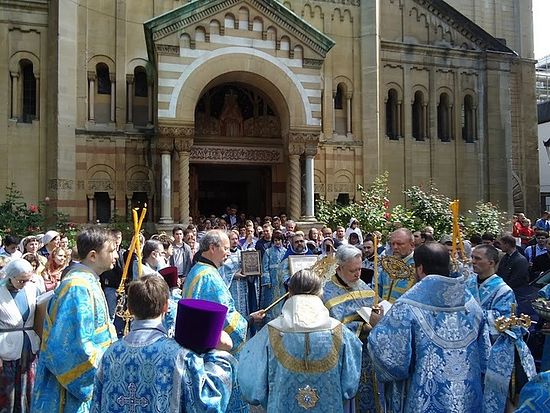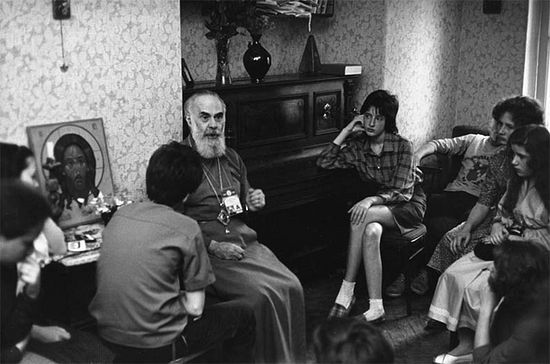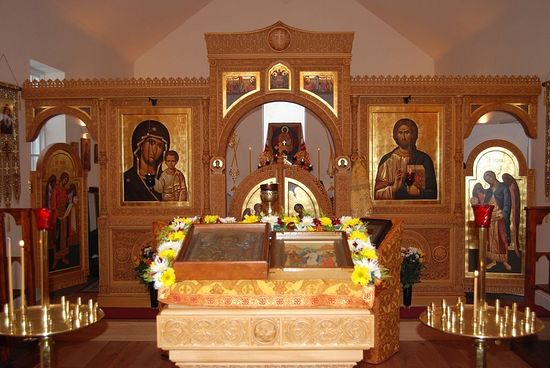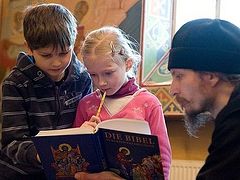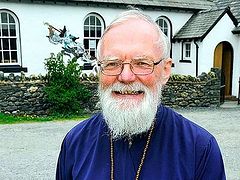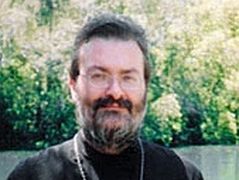The 300-year old Russian Orthodox presence in the British Isles and Ireland was for 200 years of that time limited to that of an Embassy church in London. Although occasional interest would be shown by an individual or there would be an Anglo-Russian marriage, Non-Russians, especially outside London, never knew that such a church existed. However, with the Anglo-Franco-Russian alliance of the First World War, more and more Russians came to work in London for the war effort. By 1916 Metropolitan Pitirim (Oknov) of Saint Petersburg, who was then responsible for churches outside Russia, was drawing up plans to build a Russian Orthodox church in London. Translations of some Orthodox service books had already been made into English by Orlov and, in the USA, by Hapgood. This progress was all interrupted by the 1917 Revolution, but that in turn brought some 2,000 Russian refugee-émigrés to London and the surrounding area.
This resulted in the consecration of a bishop for the Russian community in London, Bishop Nicholas (Karpov). Sadly, he fell ill when very young and after only three years he reposed in 1932. The hopes of the first Hierarch of the Russian Orthodox Church Outside Russia, Metropolitan Antony (Khrapovitsky), that he would be able to present the Russian Orthodox Faith to English people were unrealized. In 1937 the former English Tutor of the Tsarevich Aleksey, the Yorkshireman Sidney Gibbes, returned to England from the Far East. By then he had not only joined the Orthodox Church but had been ordained as Fr Nicholas Gibbes (+ 1963), the first 20th century English Orthodox priest, bearing the name of the martyred Tsar. An academic by temperament, he opened an Orthodox chapel in Oxford. After 1945 several thousand Russians, mainly from pre-war Poland, what is now the western Ukraine and Belarus, came to England and many settled in the north of England. A new chapter in our history had begun.
Archbishop (later St) John (Maximovich) (+ 1966), based on the Continent, looked after most of the faithful, but by 1954 those in the North had their own Bishop Nikodim (Nagaev) of Preston, who later became Archbishop in London (+ 1976). Meanwhile, in 1957 the small Patriarchal parish in London obtained a bishop in the future Metr Antony (Bloom) (+ 2003), who was to become well-known to Anglicans and others through his talks and books and also radio and TV appearances. By the 1960s, with the old certainties gone and doubts about everything, numbers of English people, mostly Anglicans, began to show an interest in the Russian Orthodox Church. This seemed to them to have far more continuity of Tradition than more recently-appeared varieties of Protestantism (including Anglicanism) or Roman Catholicism. Many Anglicans were attracted to the personality of the English-speaking Metr Antony, who set up a tiny network of communities, called the Sourozh Diocese. Witness was greatly helped by the fact that churches were then beginning to conduct services in English. At first this was only in London and Oxford, where the only permanent churches and chapels existed, but it has since spread.
Today, fifty years on, there are Russian Orthodox churches all over the British Isles and Ireland, though only a few of them in permanent buildings that belong to Russian Orthodoxy and celebrating regular services. Moreover, a majority of Russian Orthodox clergy are natives of the British Isles. Long gone are the days when just to witness a Russian Orthodox service you had to go to one of the two London churches or to the chapel in Oxford, indeed the largest Russian Orthodox church building in the country is elsewhere. With the immigration of Russian Orthodox, mainly from the countries of the ex-Soviet Union, and the immigration of other Orthodox from Eastern Europe over the last fifteen years especially, we now need to expand rapidly. There remains a huge amount to do. In the meantime, a small but steady stream of native people from all four countries of the British Isles and Ireland, continues to come to our services and some join the Church, attracted by our faithfulness to the bimillennial Orthodox Christian Tradition.
Thus, we can see that our 300-year old history can be divided into three distinct periods. The first lasted 200 years – the period as an Embassy church in London. The second that lasted 50 years was a London-centred period of survival and consolidation and pastoral care for Russian speakers. The third which began after 250 years of presence and which has lasted 50 years so far, has been a period of openness to the surrounding world, a period of witness and expansion throughout these islands. Our future place and role in these islands is precisely to continue to expand and witness to the Orthodox Tradition and Faith, not just for our own people, whose children and descendants are English-speaking and locally educated, but for those who seek – and find – spiritual comfort in partaking of the roots and origins of Christianity in the Faith and Tradition of our worldwide, multinational and multilingual Russian Orthodox Church.

